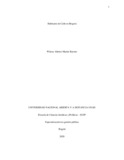Mostrar el registro sencillo del ítem
HABITANTE DE CALLE EN BOGOTÁ
| dc.contributor.advisor | Gómez Acosta, Juan José | |
| dc.coverage.spatial | cead_-_josé_celestino_mutis | spa |
| dc.creator | Martin Barreto, Wilson Alberto | |
| dc.date.accessioned | 2020-10-19T16:00:32Z | |
| dc.date.available | 2020-10-19T16:00:32Z | |
| dc.date.created | 2020-09-29 | |
| dc.identifier.uri | https://repository.unad.edu.co/handle/10596/36857 | |
| dc.description.abstract | La historia de los habitantes de calle en Bogotá se remonta a la segunda mitad del siglo XX, cuando la Plaza de Bolívar, ubicada en todo el corazón de la capital del país, para esa época dejó de ser un mercado y en el barrio vecino a este sector, el barrio Santa Inés, se empezó acoger a los campesinos y comerciantes de la zona. Durante los años setenta y ochenta, la decadencia y el desprestigio del barrio Santa Inés empezó a ser más evidente dado que fue allí donde gran parte de los habitantes de las calles de Bogotá comenzaron a llegar. Nombres como El ‘Pajarito’, ‘El Bunker’, ‘El Roto’, ‘La Reja’ y ‘La Cartonera’ fueron algunos de los cuales pertenecían a las bandas criminales que se ubicaron en este barrio. En el año 1998 Enrique Peñalosa, quien para esa época era alcalde de la capital, decidió intervenir radicalmente el sector conocido como “El Cartucho”, en las mismas calles en la que se ubicada en el antiguo barrio Santa Inés, transformado posteriormente en el parque Tercer Milenio. Uno de los hechos más importantes para los habitantes de calle en Bogotá ocurrió el 27 de mayo del 2016 cuando se hizo la intervención al Bronx, ubicado entre las calles 9 y 10 y las carreras 15 y 15 A en el sector los Mártires, donde al menos 2.500 policías coordinaron un operativo para intervenir la zona y acabar las diferentes problemáticas que se vivían durante la época, incluyendo el micro tráfico. De acuerdo con el último censo hecho a habitantes de calle en la ciudad en el 2011, en Bogotá hay 9.614 personas en condición de indigencia y las más recientes proyecciones indican que actualmente hay alrededor de 15.000 ciudadanos en esta condición, sin embargo, para hacer un análisis más profundo, hay que tener en cuenta algunos de los resultados de censos históricos, de forma que: en 1997 se encontraban 4.515 habitantes de calle; en 1999, 7.817 personas y para el año 2001, se contabilizó una población de 10.475. Las calles con mayor presencia de habitantes de calle en la actualidad las tienen las localidades de Santa Fe, Puente Aranda y Los Mártires, según información entregada por la Secretaría de Integración Social, quienes durante el año 2016 señalaron en un estudio que los habitantes de calle se encontraban en cerca de 2.863 ‘cambuches’ distribuidos en la capital del país. | spa |
| dc.format | ||
| dc.title | HABITANTE DE CALLE EN BOGOTÁ | |
| dc.type | Monografia | |
| dc.subject.keywords | Calle - Ciudadano habitante de la calle en servicios de atención especializada - Habitabilidad en calle - Habitante de la calle - Cambuche | spa |
| dc.description.abstractenglish | The street dweller´s history in Bogotá remounts to the second half of the XX century, when the Bolivar´s Plaza, located in the middle of the country´s capital, stopped being a marketplace, and right in the next neighborhood, called the Santa Ines neighborhood, the peasants and merchants were started to be welcomed. During the 70´s and 80’s the decadency and discredit of the Santa Ines neighborhood started to be evident due the arrival of most of the street dwellers of Bogotá into this place. Names like “the little bird”, “the bunker”, “the broken one”, “the grill” and “the cardboard box” belonged to criminal bands located on this place. By 1998 Enrique Peñalosa, the mayor for those times, decided to radically intervene on the sector well knew as “the cartridge”, right in the same streets where the old Santa Ines neighborhood were located and later would be transformed into the third millennium park. One of the most important facts for the Bogotá’s street dwellers happened on May 27th of 2016 when the Bronx neighborhood intervention was developed, between the 9th and 10th street and the 15th and 15th-A race, in the Martyrs sector, where at least 2500 cops coordinated an operative to intervene the zone and end up the micro traffic and some others problematics that were faced by the time. According to the last census done to street dwellers of the city during 2011, there is a total of 9614 people on indigence conditions, and the most recent projections indicates that at present day there is around 15000 of citizens under this condition, however, in order to make a deeper analysis we must take into account some of the results of the historical census, where in 1997, 4515 street dwellers, in 1999, 7817 people, and by 2001 a total of 10475 people were accounted. The streets with most presence of street dwellers are actually in the Santa fe’s, Puente Aranda’s and the martyrs’ localities according to information delivered by the Social Integration Secretariat, the same organization that during 2016 indicated in a studio that the street dwellers were distributed all around the capital in 2863 “cambuches”. On average, a single night of recycling leaves incomes of 60000 pesos, taking care of cars 20000 to 30000 pesos and begging for money 70000 to 150000 pesos. Some of the historical census have left the next results: in 1997, 4515 street dwellers, in 1999, 7817 people, and by 2001 a total of 10475 people were accounted. The last census made in Bogotá was made in 2011. | spa |
| dc.subject.category | Gestión Publica | spa |















